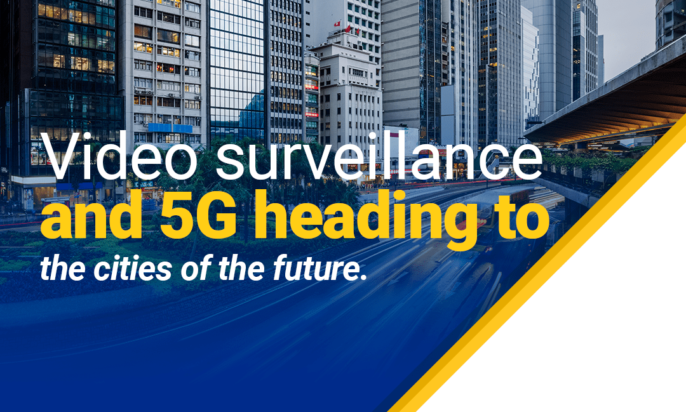
6 Technological trends that will affect the security sector in 2022
By:admin |
By: Johan Paulsson, CTO in Axis Communications
At Axis we often start thinking about technology trends in the context of what we predicted. However, what is very clear is that the concept of ‘trust’ has appeared in most publications in one form or another. The context has changed slightly over the years, sometimes centering on trust in the use of data, trust that systems are secure, or the fundamental need to trust that organizations are doing the right thing. But it is clear that it is vital to match the continuing pace of technological innovation through an equitable evolution in building trust in the use of technology.
Now more than ever there is a healthy desire, on the part of individuals, organizations, and policymakers, to ensure that new technologies are developed, manufactured, used, and secured in positive ways that we can trust. For Axis, of course, that means always working towards our vision of a smarter, safer world.
1. Connected in hybrid environments:
To the end user of technology, from a consumer using their mobile phone to security personnel managing video surveillance, the technology architecture used to deliver services has become invisible. It doesn’t matter if the processing takes place on a local device, server or in a remote data center: everything is simply “connected”.
Last year we talked about the world going ‘horizontal’, where the combination of cloud, on-premise server and edge technologies would be used more and more together, each employing their strengths, in so-called hybrid solutions. . This has not changed, but it is very clear that the question of architecture is unique to each client and must take into account internal resources and policies as well as external factors, such as local and international regulation.
As a security solutions provider, it is not up to us to define for the customer the environments and architecture they should use, but rather to equip them with the tools and flexibility to decide on the best solution for their particular situation.
2. Cybersecurity is born from a healthy skepticism
We don’t always think of skepticism as a positive trait, but when it comes to cybersecurity it can be prudent. The billions of connections that now exist between devices, networks, and data centers have made the concept of securing a perimeter around any organization almost completely obsolete. Walls that might have previously existed have become leaky, and thus a new approach to security has emerged: zero-trust networks. The COVID-19 pandemic has also played a role here, as much more flexible working has seen more previously used devices within the organization’s walls connected remotely over the public internet.
When zero-trust networks mean that the security profile of every device and application that connects to a network is independently evaluated each time it connects, it has significant implications for the video surveillance industry. Signed firmware, regular software updates, secure boot, encrypted data/video, and secure identity will become hygiene factors in customer solutions.
3. Authenticate everything
While taking a zero-trust approach to cybersecurity focuses on authenticating the credentials of connected devices and applications, the ability to establish the authenticity of video surveillance itself is critical to trusting its value. The manipulation of video after it is captured, coupled with the increased sophistication in creating manipulated images, means that we may see the authenticity of video surveillance images being questioned more frequently.
Therefore, it will be imperative that video surveillance can be established without question as genuine. Our approach is to add a digital signature to the video stream at the point of capture, a hash on each video frame, providing proof that the video was produced within a specific camera and has not been tampered with since. But this is a problem for the security industry as a whole. Therefore, it is imperative that the industry align behind initiatives to standardize approaches to ensure the authenticity of video images captured by video surveillance cameras, ideally based on open source software and initiatives.
4. AI is established and accepted (with proper controls)
The technology itself should not be regulated, but that the use cases of the new technology should be. Legislation and regulation related to the development and use of AI-based technologies and applications need to be developed at the local, regional and international levels. And it goes without saying that all organizations employing AI must comply.
While we are still positive about the potential of AI and deep learning in video surveillance, we expect to see an even greater focus on initiatives to ensure that AI is implemented in an ethical and non-judgmental manner. This is a positive thing and will become even more important as AI is integrated into all aspects of video surveillance. Further integration of AI into the most fundamental levels of technology, the system-on-chip (SoC), will see AI used to improve and optimize all aspects of video surveillance performance, from camera setup to image quality and analysis.
5. COVID-19 as a catalyst
The pandemic has been a catalyst for low- or no-touch technologies, many of which are now permanently embedded, as has the use of smart video to ensure social distancing and public health guidelines are adhered to. Related to the technology sector, the pandemic has also resulted in supply chain issues that have caused many organizations to reconsider how they create and source key components in their products.
The “connected” nature of everything has meant that the global shortage of semiconductors has been a major problem in many sectors, from consumer technology to car manufacturing. This, in turn, has led to more organizations publicly declaring their desire to design their own semiconductor or system-on-a-chip. While this might represent a trend in some industries, it is of course something Axis has been doing for years with ARTPEC, and certainly designing SoCs optimized for specific applications is something we anticipate more organizations will do in the security industry and beyond. .
6. 5G finds its place
Some might think we are behind the curve by highlighting 5G as a ‘trend’ in the surveillance industry, however for us a new technology only becomes a trend when we start to see valuable use cases in the industry of security and surveillance. Although we still think it’s early days, this is starting to happen with 5G.
While much of the excitement around 5G has focused on network performance improvements for consumer applications, one of the most exciting areas is how private 5G networks are emerging as a more compelling use case for the technology. . We believe that private 5G networks show genuine potential for video surveillance solutions at large or multiple customer sites, and could bring particular benefits from a cybersecurity perspective. Certainly, if customers are building private 5G networks, video surveillance will need to be seamlessly integrated.
All the trends seen through the lens of sustainability
Sustainability should no longer be considered a trend. It must be embedded in everything we do: how we design and manufacture products, as well as the way we manage our business, the performance of our suppliers, all aligned to reduce our environmental impact and operate in an ethical and trustworthy manner. Whenever a technology trend appears to present an opportunity, it should also be examined whether it can be developed and brought to market in a sustainable way.
Do you want more information?
Please contact us.
CODETEC Corporate Chihuahua
+52 (614) 200 86 21
CODETEC is a company specialized in the design, engineering, implementation and support of special systems. We have more than 15 years as an integrator of technological solutions nationally and abroad:
- Juarez, Chih.
- El Paso, Texas.
- CDMX
- Obregon, Son.
- Guadalajara, Jalisco.
- Merida, Yuc.
- Piedras Negras, Coah.
- Queretaro, Qro.
- San Luis Potosí, S.L.P.
We are an IT Partner of Axis Communications, an industry leader in network video, offering products and services for video surveillance and analytics, access control, intercoms, and audio systems. https://www.axis.com/es-es



